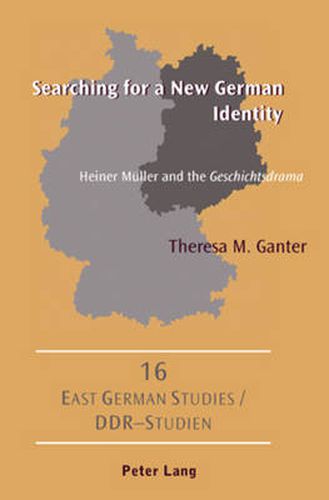Readings Newsletter
Become a Readings Member to make your shopping experience even easier.
Sign in or sign up for free!
You’re not far away from qualifying for FREE standard shipping within Australia
You’ve qualified for FREE standard shipping within Australia
The cart is loading…






This title is printed to order. This book may have been self-published. If so, we cannot guarantee the quality of the content. In the main most books will have gone through the editing process however some may not. We therefore suggest that you be aware of this before ordering this book. If in doubt check either the author or publisher’s details as we are unable to accept any returns unless they are faulty. Please contact us if you have any questions.
This book investigates Heiner Muller’s use of the Geschichtsdrama as a tool in his search for post-World War II and post-reunification German identity in Germania Tod in Berlin (1956/1971) and Germania 3 Gespenster am Toten Mann (1996), respectively. By using specific examples organized into relevant categories, the author demonstrates not only how these historical, allegorical, and political persons and events have affected the course of German history in Muller’s opinion, but also how he believes they have influenced German identity of the past and present and may affect its future. In her analyses of these two dramas, the author explores the many historical, political, and allegorical characters as well as the abundant intertextual references by locating their original sources in order to explain their significance as each relates to Muller’s perception of German identity at various points in time. The research focuses on Muller’s use of the literary techniques of intertextuality, collage, metaphors, allegorical figures, political songs, ballads, and fairy tales. The methodological approach is eclectic: a mixture of New Criticism, New Historicism, and Rezeptionsasthetik.
$9.00 standard shipping within Australia
FREE standard shipping within Australia for orders over $100.00
Express & International shipping calculated at checkout
This title is printed to order. This book may have been self-published. If so, we cannot guarantee the quality of the content. In the main most books will have gone through the editing process however some may not. We therefore suggest that you be aware of this before ordering this book. If in doubt check either the author or publisher’s details as we are unable to accept any returns unless they are faulty. Please contact us if you have any questions.
This book investigates Heiner Muller’s use of the Geschichtsdrama as a tool in his search for post-World War II and post-reunification German identity in Germania Tod in Berlin (1956/1971) and Germania 3 Gespenster am Toten Mann (1996), respectively. By using specific examples organized into relevant categories, the author demonstrates not only how these historical, allegorical, and political persons and events have affected the course of German history in Muller’s opinion, but also how he believes they have influenced German identity of the past and present and may affect its future. In her analyses of these two dramas, the author explores the many historical, political, and allegorical characters as well as the abundant intertextual references by locating their original sources in order to explain their significance as each relates to Muller’s perception of German identity at various points in time. The research focuses on Muller’s use of the literary techniques of intertextuality, collage, metaphors, allegorical figures, political songs, ballads, and fairy tales. The methodological approach is eclectic: a mixture of New Criticism, New Historicism, and Rezeptionsasthetik.